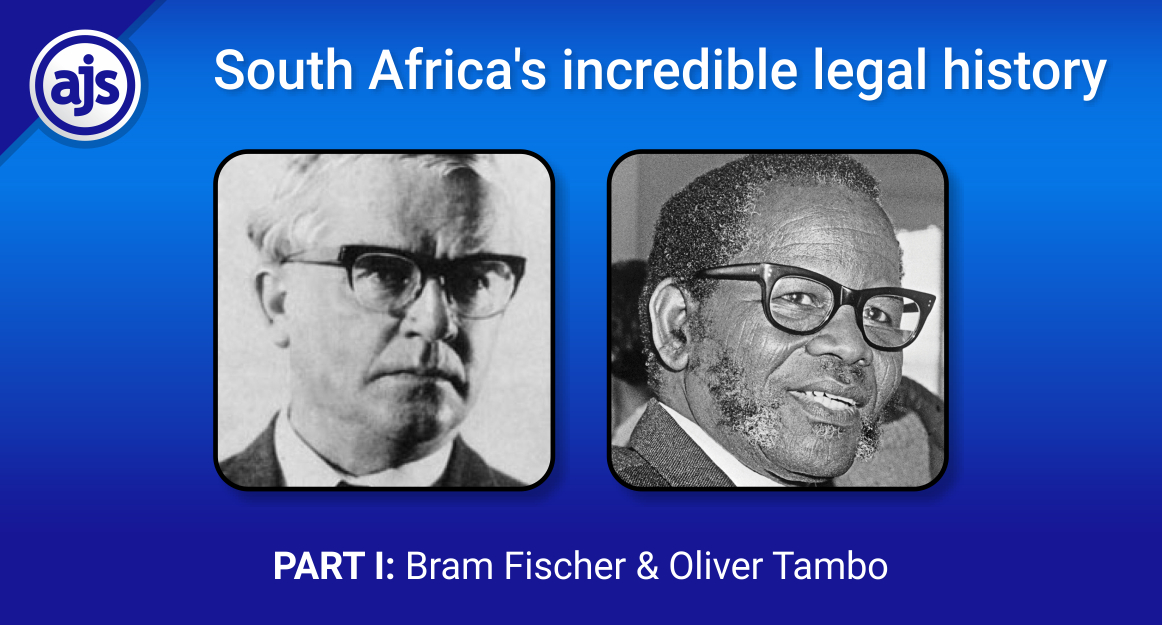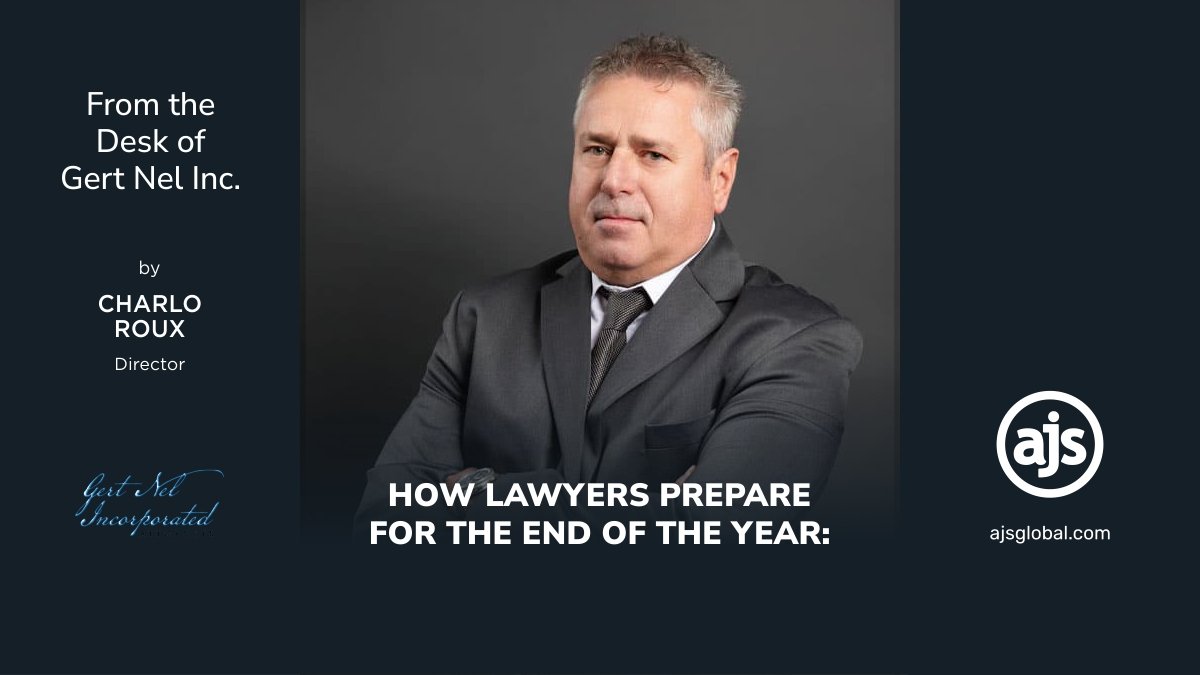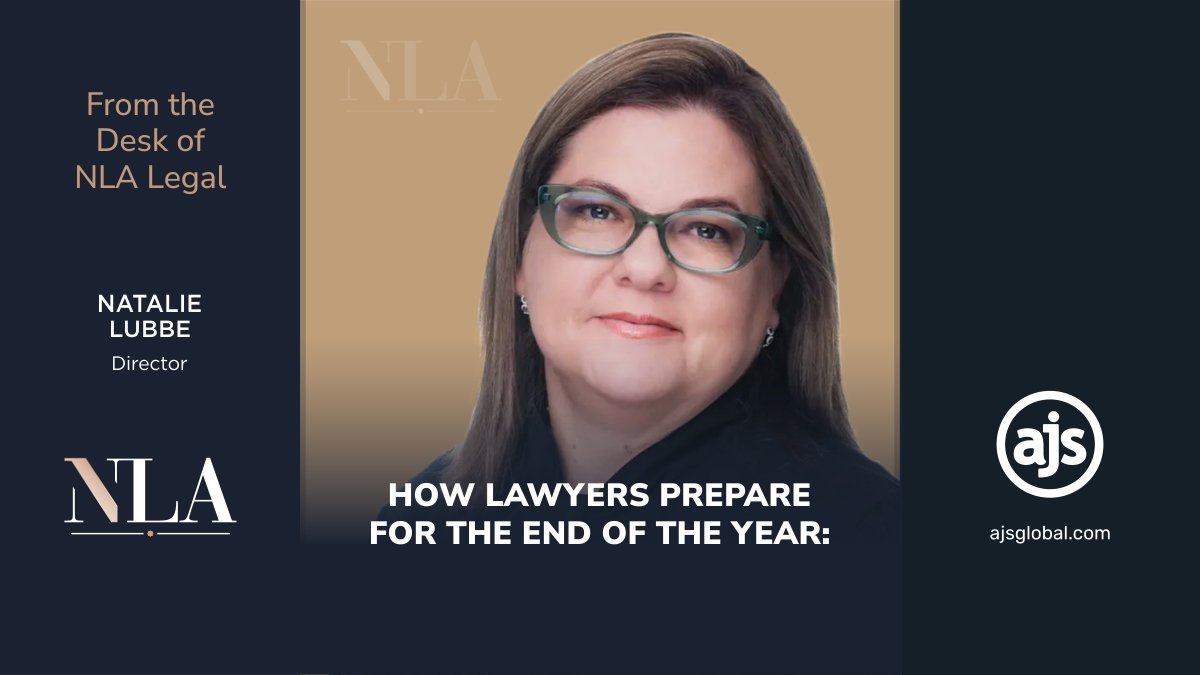
SOUTH AFRICA’S INCREDIBLE LEGAL HISTORY! Part I
The stories worth telling…
If one were to read the news in South Africa (especially recently), a feeling of immense doom and gloom might overtake you. A feeling of hopelessness at the state of our beautiful country.
And while we do hear you – the team at AJS still believe that there is so much to be proud of, especially where our legal profession is concerned.
In our previous article Let’s applaud our Lawyers, we spoke about how much we believe our lawyers deserve an enthusiastic round of applause. There is so much good they do, even when it’s behind the scenes. We can (and should) hold our heads very high where the legal profession is concerned – which comes from a very proud, distinguished heritage.
And we believe that our own local legal heroes should be paid their well-deserved dues. They deserve to be paid tribute – homage if you will. Because they undoubtedly earned it.
At the outset of this journey, we must confess that the articles in this series may not be short reads, but we promise you, they will be worthwhile ones. We hope you enjoy reading them as much as we enjoyed writing them. It has been a true honour.
Because these are the stories worth telling….
South Africa’s legal heroes
You may be sitting there wondering who we are talking about. Well, let’s just say one thing – none of these legal giants we are about to discuss are unbeknown to us. They are stalwarts, most of whom either aided in or protected those involved with the members of the liberation movements that made South Africa the amazing democratic rainbow nation that it is today.
All of these legal heroes had a lifelong commitment to human rights (in all respects) and strongly opposed any wrongdoing within our borders – vehemently.
We have so much we need to thank these incredible minds for. So, without further ado – let’s pay homage to these legal stalwarts in the manner they so richly deserve.
Advocate Abram “Bram” Fischer
From proud “Afrikaner” to defender of the liberation movement.
Abram “Bram” Fischer was born on 23 April 1908 in the Orange Free State to a prominent Afrikaans family. While he was brought up in a bilingual home, being both Afrikaans and English-speaking, Bram considered himself to be an “Afrikaner”, and a proud one at that. It may therefore be slightly surprising to discover that his beginnings in life did not mould him into the man he was to become (and remembered for).
During his school going years (in the late 1920s), Bram was drawn by his mentor, historian Leo Marquard, to join the Bloemfontein’s Joint Council of Europeans and Africans. It was here that Bram was “compelled” for the first time in his somewhat sheltered life, to shake hands with a black man. Years of racial indoctrination had turned such an ordinary everyday occurrence into something seemingly unsettling. But it was that moment that served as a turning point for his life. Because it had, by that very action, completely altered his destiny – he had started to diverge from the paths other young white Afrikaans boys his age were going down. And he would never look back.
While studying abroad at the University of Oxford on a coveted Rhodes Scholarship, Bram visited the Soviet Union where he stumbled upon Stalinism, converting him from a confirmed nationalist to a staunch communist. Something considered to be a little unorthodox at the time but something he maintained unwavering belief in, until his death.
It was during his time at the Johannesburg Bar that Bram came to know Dr Alfred Bitini Xuma (an incredible human rights advocate in his own right and the ANC President from 1940) and helped him to revise the ANC’s constitution. In so doing, Bram was charged with incitement during the mineworkers’ strike in 1946.
When the National Party was voted back into power in 1948, there was an ultimate banning of communistic views and the Communist Party of South Africa (now the South African Communist Party) in terms of the Suppression of Communism Act 44 of 1950. Communism to which Bram and his wife were avid supporters, was condemned as a “godless belief aiming at racial suicide and the dictatorship of the proletariat”. As was to be expected, considering his political beliefs, Bram was “named” under the Suppression of Communism Act.
In 1952 as part of the multi-racial Congress Alliance (something strongly frowned upon) the first large-scale, multi-racial political mobilisation against apartheid laws under a common leadership – by the ANC, the SAIC, and the CPC took place. The first group of volunteers including Nelson Mandela, Yusuf Dadoo, Moses Kotane, J.B. Marks, David Bopape and Walter Sisulu defied apartheid laws in Johannesburg and other major city centres. The defiers who began the campaign did so with a sense that history was being made. For the first time Africans and Indians, with a few whites and coloureds were engaging in joint political action under a common leadership. It was referred to as the Defiance Campaign.
With Bram’s communist leanings together with his anti-apartheid beliefs, identifying strongly with the aspirations of those who participated in the Defiance Campaign, Bram became a member of the Congress of Democrats (COD). Although the COD never became a political party, it remained a small and strictly secondary wing of the “South African People’s Congress Movement” with the aim of attaining full human rights, as set out in the Universal Declaration of Human Rights, as well as political rights for all South Africans.
Because of his beliefs and the people he identified with, Bram went on to defend Nelson Mandela, Walter Sisulu and 156 others on the charge of treason as they enforced the Suppression of Communism Act. This became known as the Treason Trials which lasted from 1956 to 1961. Among the charges laid against the 156 accused was that they had conspired to draw up the Freedom Charter, the ANC’s blueprint for a free, non-racial South Africa. Bram fought alongside Israel “Isie” Maisels, Sir Sydney Kentridge and George Bizos (all to be discussed), resulting in the anti-apartheid activists being acquitted on 29 March 1961 – the judges had agreed that the state had failed to show that the charter was a communist document.
This pure act of non-racial decency and upholding human rights resulted in Bram being banned in 1953 under the Suppression of Communism Act from most gatherings and from the COD. What followed was years of police raids on his advocate chambers and his home.
On 11 July 1963 at Lilies leaf farm (largely regarded as the birthplace of the Umkhonto we Sizwe (Spear of the Nation) in Rivonia, the police arrested leaders of the liberation movement, including Nelson Mandela. In October 1963, Nelson Mandela and nine of his fellow ANC comrades went on trial in Pretoria on charges of sabotage. The trial is commonly known as the Rivonia Trials – the “trial that changed South Africa”. Bram was hired as their senior advocate defending their case and in so doing became “an Afrikaner fighting an Afrikaner government” – something that did not go down well with those in power. Obviously.
Nevertheless, due to his, and other members of the defence team’s work, the accused were sentenced to life imprisonment and not death (as the state had asked for). But again, due to his actions (and soon after the Rivonia Trials), Bram was arrested for once again violating the Suppression of Communism Act and conspiring to commit sabotage. He was sentenced to life imprisonment.
Bram died on 8 May 1975 while incarcerated.
“If in my fight I can encourage even some people to understand and to abandon policies they now so blindly follow, I shall not regret any punishment I may incur.” – Bram Fischer
(Sources we used and to whom we owe thanks: South African History Online; The Conversation; Famous Trials)
Oliver Tambo
From expelled student to global ambassador of the ANC
Oliver Reginald Kaizana Tambo was born on 27 October 1917 in the village of Kantilla, Bizana, in the Mpondoland (eQawukeni), region of the Eastern Cape. He was brought up in a large family that held to their traditional values. His father, whilst a traditionalist, saw the value of a Western education. As such, Tambo was enrolled in the Holy Cross missionary school, where at the tender age of 11, he developed a particular aptitude for discussion and debate. Something that would come into the fore as he grew older.
After completing high school at St Peters in Johannesburg, he enrolled for a 3-year BSc degree in mathematics and physics from the University of Fort Hare. It was during his time at Fort Hare that he first met Nelson Mandela, where both were members of the Students Christian Association (SCA) and a strong mutual admiration ensued.
Not satisfied with “just” a BSc degree in maths and physics, Tambo enrolled for a diploma in higher education. During this period Tambo led an initiative for students to rebuild a disused tennis court on the campus. A healthy pursuit and a way to pass the time on Sundays. When the project was finished, the students excitedly scheduled an opening ceremony, which Tambo reported to the University warden. The authorities however, in all their “wisdom” declined permission for the students to play tennis on Sundays, as they believed it was “a breach of the faith” (whatever that means). This did not sit well with those students who had been involved in the well-meaning endeavours and what ensued was a policy of non-cooperation with the university authorities. Understandably.
This saw Tambo (who was secretary of the Students Representative Council at the time) together with 45 other students being expelled. All but 10 of them were readmitted after two weeks. Tambo was not one of them.
After his expulsion, Tambo returned home where he arduously applied for teaching jobs but was repeatedly turned down when the would-be employers discovered he had been expelled from school. Eventually (and fortunately) he was offered a position as a teacher in physics and mathematics at his alma mater, St Peter’s.
It was during his time as a teacher, that he met Walter Sisulu (in 1942), an estate agent whose office was used as a regular gathering place by like-minded individuals, including Anton Muziwakhe Lembede, Jordan Kush Ngubane and of course fellow student at Fort Hare, Nelson Mandela. Regular visits were also paid to Dr Alfred Bitini Xuma, President of the ANC. Here discussions and plans ensued on how to revive the ANC. And it was here that Tambo’s political life began.
As Xuma started to revise the ANC’s constitution in 1943, together with the help of Bram Fischer (as discussed above), Tambo became informally involved with those discussions. Tambo continued his involvement with these preparations and revisions of the ANC’s constitution until its final stages, when it was adopted at the 1943 Bloemfontein conference.
By 1944, the ANCYL was formally accepted by the ANC and Tambo was its founding member. In 1946, Tambo had quickly risen through the ranks and was elected to the Transvaal executive of the ANC. His political career really taking flight.
But it was only after a decade of teaching at St Peter’s that Tambo took a grand step in a new direction and decided to change career paths. After completing his legal studies at Unisa and serving articles, Tambo together with Mandela formed Mandela & Tambo in Johannesburg in late 1952. They became the first, and at that time the only, black African law firm in South Africa.
In 1955 Tambo had become the Secretary General of the ANC in which capacity he played a leading role in the Congress of the People that same year and later Deputy President of the ANC in 1960.
Due to his high profile, he together with Mandela and 156 Congress of Democrats leaders were arrested in December 1956 and charged with high treason – this was known as the “treason trials”. Before the prosecution’s case was even completed however, charges were withdrawn against 73 of the 156 accused. Amongst those released was Tambo – after being held for two weeks.
Although the preliminaries of the treason trial continued for over a year, charges against Tambo were eventually withdrawn in December 1957. Only in August 1959 did the treason trial against the remaining 30 defendants officially begin, resulting in a surprising ruling at the time – with indictments against the remaining accused totally lacking in particularity, Justice Rumpff stated:
“On all the evidence presented to this court and on our findings of fact, it is impossible for this court to come to the conclusion that the African National Congress has acquired or adopted a policy to overthrow the state by violence, that is, in the sense that the masses had to be prepared or conditioned to commit direct acts of violence against the state.”
But the damage had been done – the ANC was declared an illegal organisation under the Suppression of Communism Act on 8 April 1960. It was at this time that the ANC leadership decided that Tambo would best serve the liberation movement by going into exile where he would try to build international ties. Tambo became an ambassador for the ANC and by 1990 had established missions in 27 countries around the world.
After the death of Chief Albert Luthuli in 1967, Tambo was appointed President-General of the ANC, and led the organisation in exile until his eventual return to South Africa in December 1990. While Tambo retained a pivotal role in the lead up to the election of the first democratic government in South Africa in 1994, with one year to go, Tambo succumbed to a stroke in April 1993.
He unfortunately never did get to see a free South Africa, something he had fought for, for most of his adult life.
“The fight for freedom must go on until it is won; until our country is free and happy and peaceful as part of the community of man, we cannot rest.”
(Sources we used and to whom we owe thanks: University of Cape Town, South African History Online).
Looking forward to the rest of the series, AJS must express its admiration for the legal profession, which it loyally and respectfully serves. It’s very clear that South Africa has an extremely rich legal history whose members fought on the right side of law, human rights and history.
In Part II of this series we will be looking at legal stalwart Sir Sydney Kentridge and the absolute icon that is George Bizos – we do hope you will join us as we pay homage and tribute to these legal heroes. Because they so richly deserve the recognition.
AJS once again applauds our lawyers – our professional problem solvers, our balance restorers, our legal compass holders.
Thank you for all you do!
– Written by Alicia Koch on behalf of AJS





Leave a Reply